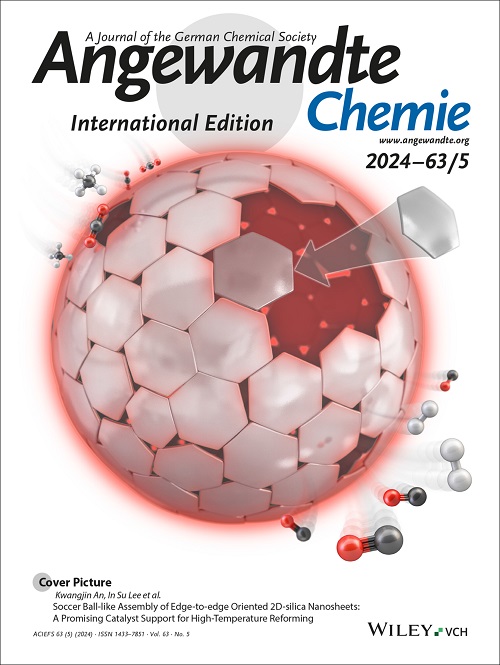Anion-Dominated Calendar Aging in Aqueous Zinc Metal Batteries.
IF 16.9
1区 化学
Q1 CHEMISTRY, MULTIDISCIPLINARY
引用次数: 0
Abstract
Zinc metal batteries (ZMBs) are promising candidates for large-scale energy storage. While the majority of current research focuses on cyclic aging, the impact of calendar aging on zinc anodes has received far less attention. Here, we reveal that zinc deposition morphology, governed by anion chemistry, plays a decisive role in calendar degradation by amplifying interfacial corrosion and accelerating "dead" zinc accumulation. Notably, intrinsic corrosion rates alone do not predict degradation severity; for instance, triflate anion shows low corrosion but induces highly porous deposits and rapid aging. To address this, we propose a comprehensive electrochemical descriptor to quantify deposition morphology beyond traditional morphological characterization. Moreover, we introduce an acetatization strategy that tailors Zn2+ solvation and promotes dense plating, effectively suppressing side reactions and "dead" zinc formation. This approach effectively curbs calendar degradation, yielding nearly a 49-fold improvement in capacity retention. Under demanding conditions (6-hour aging intervals per cycle), practical anode-free Cu||ZnI2 cells (~3 mAh cm-2) exhibit high cycling stability, maintaining 96.2% of their initial capacity over 1000 hours. These findings provide a comprehensive understanding of zinc anode degradation and offer a viable route to address calendar aging in ZMBs.阴离子主导的锌金属水电池历法老化。
锌金属电池(zmb)是大规模储能的有前途的候选者。目前的研究大多集中在循环老化上,而日历老化对锌阳极的影响却很少受到关注。在这里,我们发现锌沉积形态受阴离子化学控制,通过放大界面腐蚀和加速“死”锌积累,在日历降解中起决定性作用。值得注意的是,固有腐蚀速率本身并不能预测降解的严重程度;例如,三氟酸阴离子具有较低的腐蚀性能,但会导致多孔沉积和快速老化。为了解决这个问题,我们提出了一个全面的电化学描述符来量化沉积形态,而不是传统的形态表征。此外,我们还引入了一种乙酰化策略,该策略可以调整Zn2+的溶剂化,促进镀的致密,有效地抑制副反应和“死”锌的形成。这种方法有效地抑制了日程表的退化,在容量保留方面产生了将近49倍的改进。在苛刻的条件下(每循环6小时的老化间隔),实用的无阳极Cu||ZnI2电池(~3 mAh cm-2)表现出很高的循环稳定性,在1000小时内保持其初始容量的96.2%。这些发现提供了对锌阳极降解的全面理解,并为解决zmb中的日历老化问题提供了可行的途径。
本文章由计算机程序翻译,如有差异,请以英文原文为准。
求助全文
约1分钟内获得全文
求助全文
来源期刊
CiteScore
26.60
自引率
6.60%
发文量
3549
审稿时长
1.5 months
期刊介绍:
Angewandte Chemie, a journal of the German Chemical Society (GDCh), maintains a leading position among scholarly journals in general chemistry with an impressive Impact Factor of 16.6 (2022 Journal Citation Reports, Clarivate, 2023). Published weekly in a reader-friendly format, it features new articles almost every day. Established in 1887, Angewandte Chemie is a prominent chemistry journal, offering a dynamic blend of Review-type articles, Highlights, Communications, and Research Articles on a weekly basis, making it unique in the field.

 求助内容:
求助内容: 应助结果提醒方式:
应助结果提醒方式:


